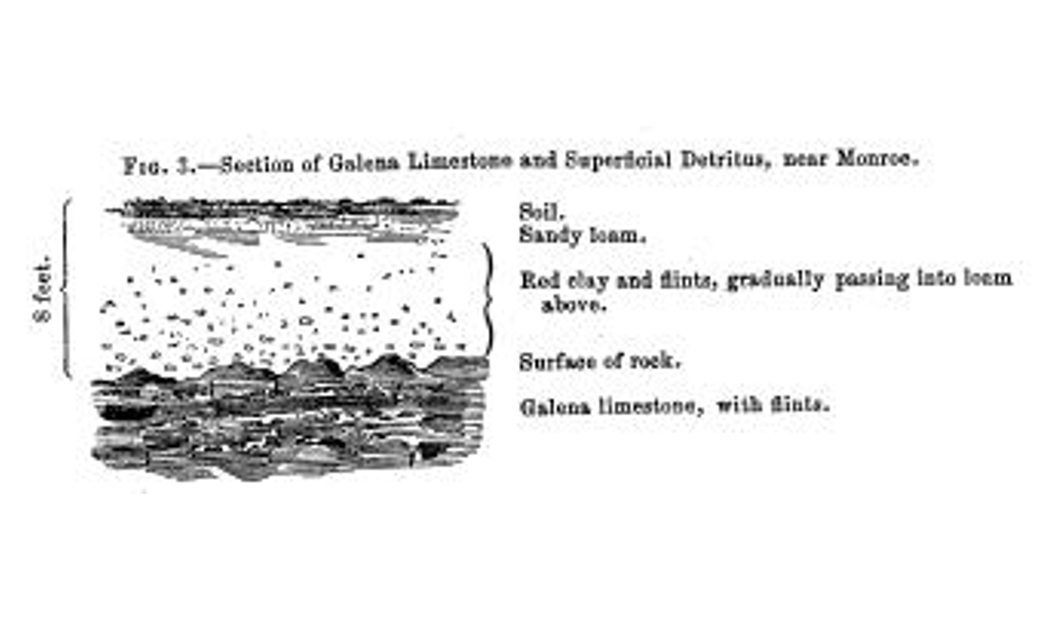Jacob Riyeff
The Night Heron’s Call
Before the melt-waters
have drumlin-dammed a high hill-water for the water-maid
to lave her maiden hair….
Long long ago they’d turned the flow about.
But had they as yet morained
where holy Deva’s entry is?
Or pebbled his mere, where
still the Parthenos
she makes her devious exit?
—David Jones, The Anathemata
i. Between the Mississippi and Lake Michigan, anytime in the later Holocene
The black-crowned night herons hunt,
stalking the ripe water’s edge.
Their feet women’s elegant
skeleton hands
reaching for a fine dainty
deep in the muck.
*
ii. Shallow Ocean, ca. 460-420 million years ago
liverworts luxuriate
with bryophyte kin,
enzymes shattering
rocky coastland
as millipedes
savage a newly
predatory
world. cooksonia
stretch their stalks
to open skies,
vascular tissues
transporting water
in the rivers' deltas.
but in the waters,
the waters shallow
and infused with light,
euroamerica
is coming together:
untold numbers
of bryozoans
and cephalopods
live and eat
and die in their millions,
leaving carbonate
deposits, and wind
and water and weight
do their work,
great grey clouds
move over the waters,
metallic salts
hang suspended
as sulpheretted
hydrogen
precipitates lead,
shapes sulpherrets
forming limestone:
redwood lune
beneath the sorrel:
flapping moth
savaged by barred wren
compacts, lithifies,
the sun across the sky,
earth orbiting
as joint crevices
fill, dolomite
drums clayey
deposits, yellow
and tough, immense
cogs crystalize
as limestone ions
dance with abandon,
dolomitization
drawing, lurching
forward so slowly,
like sugar and brown,
seawater bathing
marine sediments,
receptaculites
colonizing
the ocean benthos,
brachiopods
latched to seabed.
galena fills
crevices, lays out
in flats and pitches,
ordovician
mineral rest
on beds of passage
into the drab
and buff as zinc
oxidizes
to sphalerite.
mud piles
and piles to shale,
a strangulation.
for now, the waves
play on, crashing
into the growing shore,
a millennial tick:
the waters subside.
*
iii. The Confluence of the Yellow and Mississippi Rivers, ca. 1,000 years ago
They're carrying clay and ochre up the sandstone,
buckets and buckets of soil under the hardwoods,
over the dolomite's curves and bluff slopes.
Fingers of prairie grass meet the woods
away below, and muscles heave their loads.
The Great Bear is taking splendid shape.
Soon it will grow with woodland grasses, under stars.
It will gaze across the Great River
long after these artists have gone beyond the waters.
*
iv. Carwynnen, ca. 3,900 BC
The granite is up, Cambrian intrusion's darling
localized here as the Carnmenellis pluton.
The batholith rolls and spoils in Neolithic
rainfall. Megacrystic capstone shelters
the workers as they lay granite and quartz
for circling and leading pavements, looking north.
One looks skyward and eyes the killas, marks
of heat and touch. They've not come far, but heavy
work hoisting the cromlech fine. Soon
acids will do their eating act, this dolmen
will fall one day. But now the props are up,
soon they'll loom over smoldering bones like a spider,
when they start the oak-logs burning, and gather
the ashes and char, tender, in gabbroic pots.
When camp is broke they’ll march back to the Crooked Hill
across the streams that become Dowr Koner.
But first, they must heap earth, thick earth
over the leavings of those gone before,
around the sockets, over the dolmen’s reach:
a bare mound to say that they were here.
*
v. Rock River Valley below Lake Koshkonong, ca 16,000-13,000 years ago
freezing and thawing
freezing and thawing
freezing, thawing—
ice thick
and dense, receding
slowly from this place.
hundreds and hundreds
of miles the ice
has lumbered granite,
copper, clays,
sand and gravel,
the water pours
and gushes and wells,
floods and flows
off the icesheet,
thru tunnel channels
and boring eskers
cutting clean
caves of mass.
here one channel
and another over
the already ancient
riverbed.
every day
the streams sluice
more sand and gravel
out in pristine
unconsolidated fans.
grains of silica
torrents of silt
tumble cobbles
and erratic boulders
into deep deposits,
orderly, stratified,
homely but powerful.
the plains will grow
with grass and flowers,
blue stem
and blazing star.
bees will come
and frogs to the kettles.
bison will range
and herons will fish
on the heated back
of the glacier's remains.
humans will come.
skunk cabbage
will lay claim
to spring soil,
and bloodroot too.
oak and hickory
tamarack and pine.
bogs will glory
and fens be born
from springs in what
ice left behind.
muskrats will make
their pushups and swim
in the free marshes.
flat expanses
will shelter corn
and tobacco. ridges
rising up to the north
and the east, ground
moraine cushioning
the frozen corridor
to the final fall,
a gentle descent
to river's course,
overlapping
sandstone and limestone
from earlier sea
bottoms and all
moving, every
last piece.
and Love will look down and smile.
*
vi. Marquette County, 2020
First you're skirting the tree-line,
you the graceful silhouette
in the gloaming
above the still lake's water.
You are the dark bird, green bird
with red eyes, the lake itself
and the lilies, the birch stand
and the drowned marsh.
*
Jacob Riyeff (@riyeff) is a teacher, translator, and poet. His work focuses on the western contemplative tradition and the natural world. Jacob lives in Milwaukee's East Village with his wife and three growing children.





